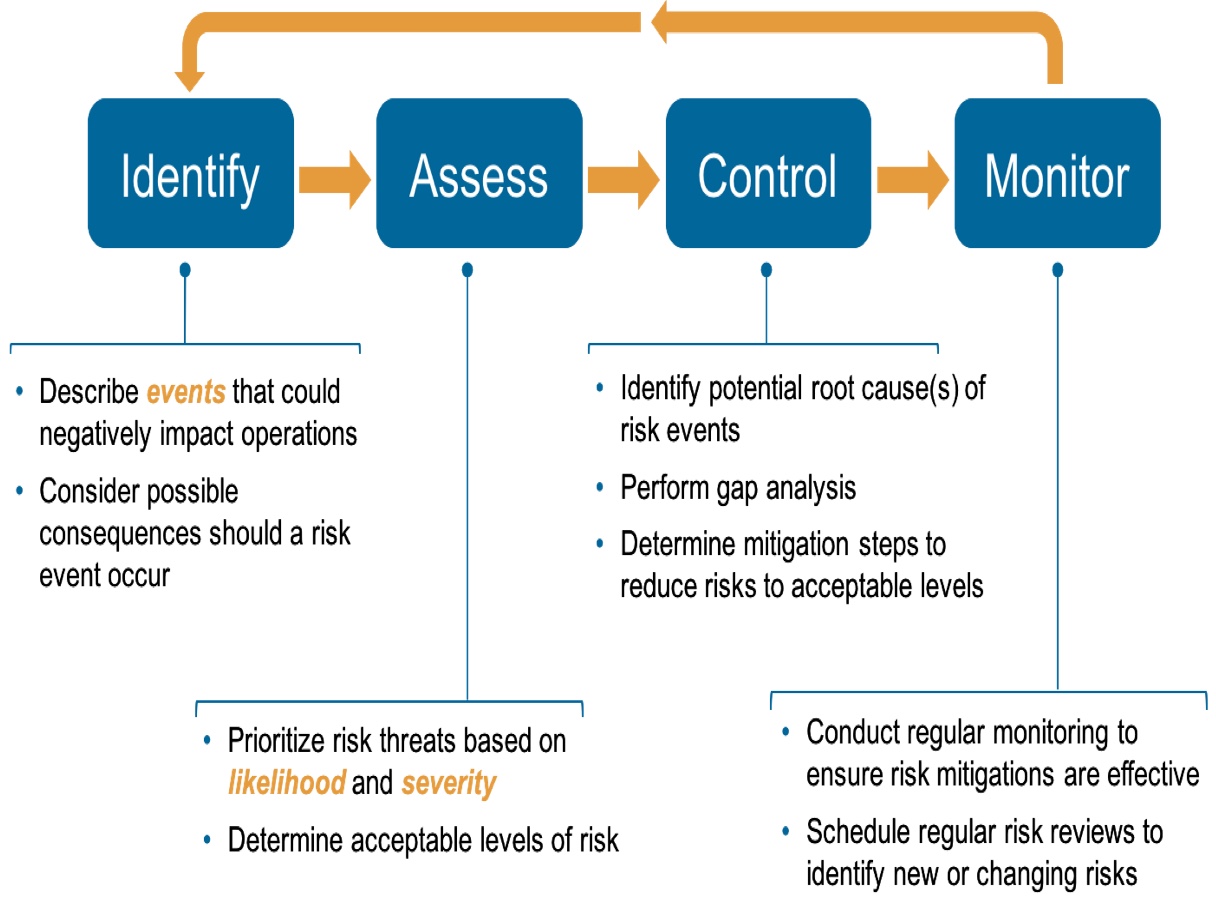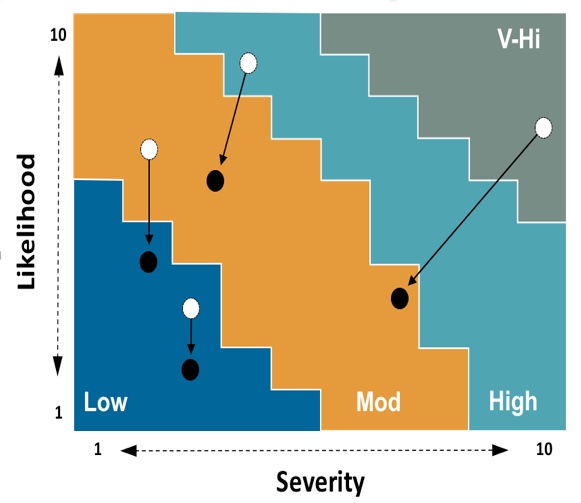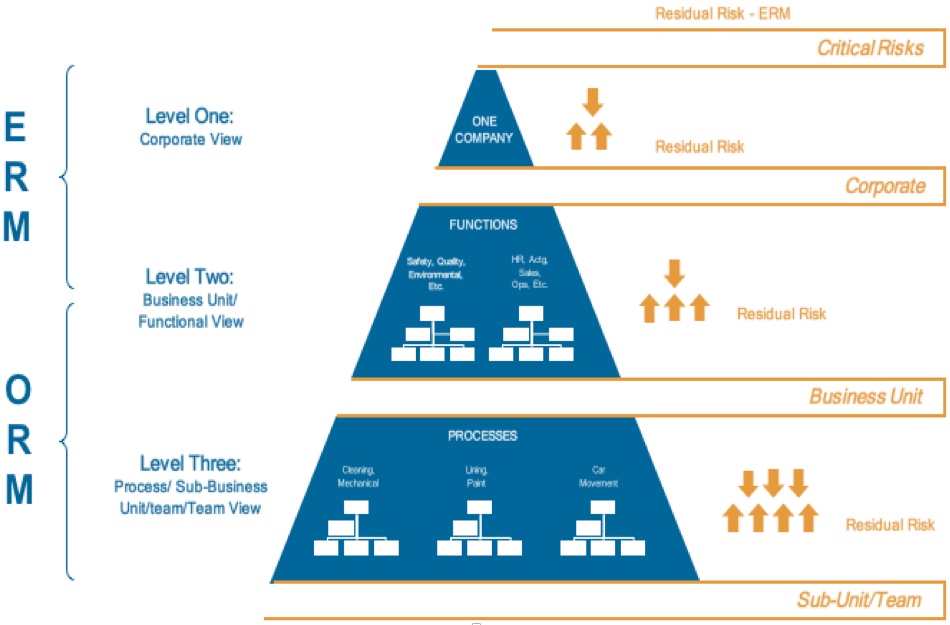SITUATION AND SOLUTION
- Many companies employ a “top down” approach to risk management, but at the enterprise level do not adequately understand the underlying operational risks
- This approach can lead to an over-insured and under-mitigated risk profile
- However, once operational risks are known and appropriate mitigations underway, residual risks may be pooled for treatment
- The most common residual risk treatment may include risk-sharing with Customers and Suppliers or insurance
- This top-down + bottom-up approach provides a balanced and prioritized risk management program that may be part of the strategic planning process
- As part of the strategic planning process, and with a business case for each project, you may invest with conviction
RISK MANAGEMENT PROCESS

RISK MITIGATION AND RESIDUAL RISK

LINKING OPERATIONS RISK TO THE ENTERPRISE



